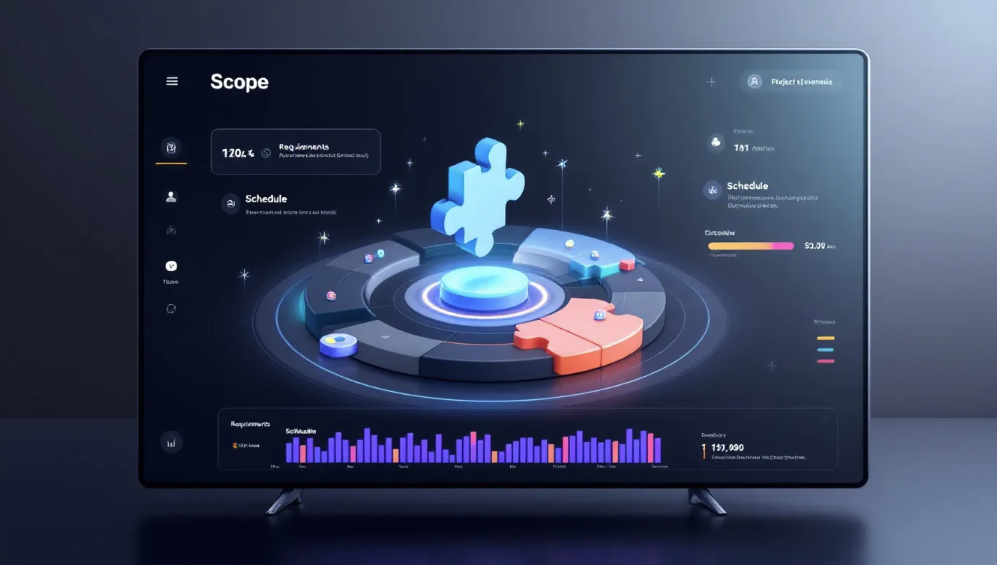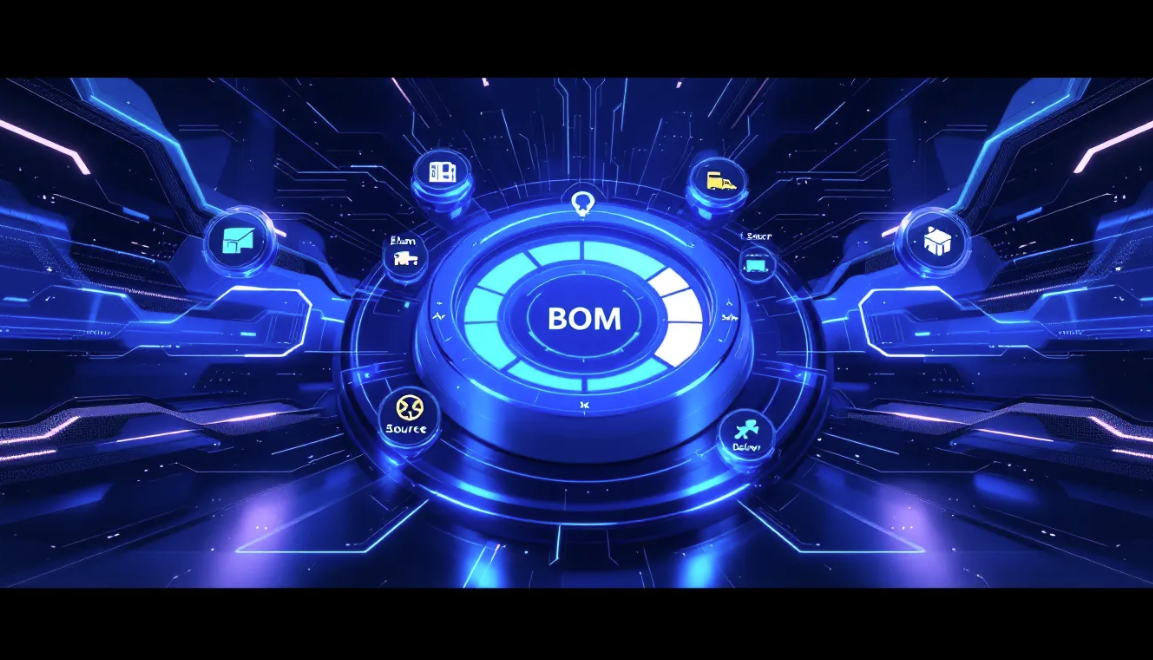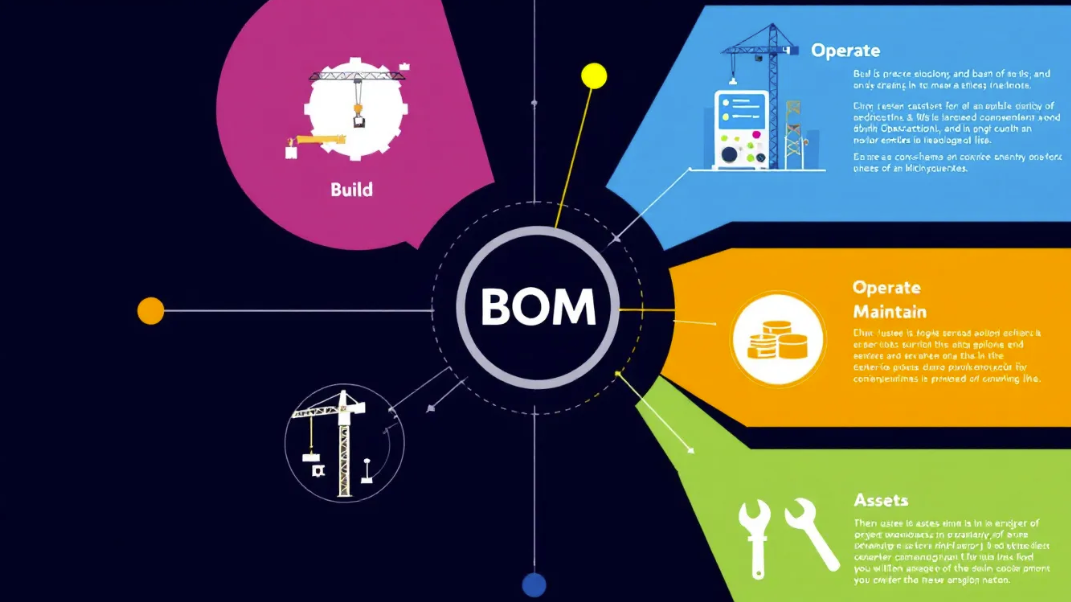A Bill of Materials (BOM) is pivotal in project management. It lists all necessary materials and components, helping in planning and execution. Effective BOM management can avoid delays and cost overruns. This article offers strategies, tackles common challenges, and shares best practices.
Key Takeaways
— A well-structured Bill of Materials (BOM) is essential for effective project management, influencing planning, manufacturing, and supply chain processes.
— Integrating BOM with project management tools enhances communication, reduces errors, and supports real-time updates, which are vital for complex project execution.
— Common challenges in BOM management include complexity, frequent changes, and the need for effective collaboration, underscoring the importance of best practices and tools like OpenBOM.
Understanding the Role of BOM in Project Management
In project management, the Bill of Materials (BOM) is a critical foundation, influencing planning, design, manufacturing, supply chain, and production. A well-structured BOM accounts for all necessary components and materials, aiding seamless transitions between project stages. This clarity helps avoid costly miscommunications and delays. Additionally, BOMs offer essential data for production planning, including material requirements and inventory levels, which are vital for maintaining project timelines.
An accurate BOM is crucial for estimating costs, impacting budgeting and resource allocation. This precision distinguishes successful projects from those that falter.
Effective collaboration fostered by manufacturing bom ensures smooth product development processes. Whether manufacturing or engineering, a detailed and accurate BOM structure helps project managers deliver on time and within budget.
Key Components of an Effective BOM

An effective BOM covers all aspects of a project through several key components. It includes 11 essential elements, such as:
— Part names
— Part numbers
— Descriptions
— Quantities
— Procurement specifications
These elements form a detailed list of all the materials necessary for production. Quantity specifications clarify the number of each component needed, aiding precise material planning and inventory management.
A well-structured BOM includes procurement instructions, detailing each part’s acquisition and processing. This information is crucial for maintaining a smooth supply chain management and avoiding production delays.
Comments and notes sections in the BOM document unexpected changes or provide additional context. Including alternate parts allows for flexible sourcing, ensuring production continues even if primary components are unavailable.
Compiling comprehensive information like design requirements and supplier details creates a robust BOM supporting all facets of the production process.
Benefits of Integrating BOM with Project Management Tools
Integrating BOM with project management tools enhances overall project efficiency and effectiveness. A primary advantage is improved team communication. When BOM data is integrated into project management tools, it ensures everyone accesses the same information, reducing miscommunication and errors. Real-time updates help prevent delays and cost overruns, as changes to the BOM are instantly reflected across all teams.
Real-time collaboration is significantly enhanced, allowing immediate updates and simultaneous editing. This coordination is crucial for managing complex projects with multiple teams and departments.
OpenBOM supports integration with various business systems through its REST API, facilitating seamless data sharing. Integrating suppliers into the BOM management process improves communication, ensuring necessary components are available when needed. This leads to faster execution of both planned and unplanned work, enhancing project success.
Common Challenges in BOM Management

Managing a BOM presents challenges, often due to project complexity, frequent changes, and the need for effective collaboration. Poor integration of BOMs can result in data silos and unnecessary information duplication, hindering overall productivity. Outdated technology can also obstruct effective BOM management, causing operational bottlenecks.
In-depth tracking of components, suppliers, and vendors adds complexity. Additionally, product variations necessitate new BOMs for each customization, complicating management and tracking. These challenges highlight the importance of robust BOM management practices and tools.
Complexity and Scale
The complexity and scale of managing BOMs can be daunting, especially in large projects with numerous components and suppliers. In manufacturing, BOMs often include a hierarchical structure, with single-level and multi-level BOMs detailing sub-assemblies and individual components. This hierarchical approach helps organize BOM data but requires rigorous tracking to ensure every part and supplier is accounted for. The design phase is particularly critical, as any oversight can lead to significant issues affecting the entire project lifecycle.
Managing complex BOMs involves tracking components and ensuring all data is up-to-date and accurately reflects the project’s current state. This requires continuous monitoring and updating, which can be resource-intensive in the context of product lifecycle management.
However, maintaining a well-organized BOM structure leads to better project outcomes and reduces the risk of errors and delays, outweighing the challenges.
Frequent Changes
Frequent changes to the BOM, often driven by design modifications and evolving project requirements, are another significant challenge. These changes require constant updates to maintain accuracy, preventing production delays and unplanned expenses. Accurate identification of information sources ensures all updates are correctly reflected in the BOM. This involves validating the BOM to ensure all required materials and their correct amounts are accounted for.
Ensuring the accuracy of quantities in the BOM prevents supply chain disruptions and maintains production schedules. Any errors can lead to significant issues, from material shortages to production halts.
Verifying the completeness and accuracy of the BOM is a continuous process requiring diligence and attention to detail. Effectively managing these frequent changes ensures the BOM remains a reliable source of information throughout the project lifecycle.
Collaboration and Communication
Effective collaboration and communication are critical for successful BOM management. Ineffective collaboration can exacerbate errors and increase costs, making stakeholder alignment essential. Clear communication among all departments involved in BOM management helps prevent misunderstandings and ensures everyone is aligned, particularly important in construction projects with multiple teams and contractors.
Fostering inter-departmental collaboration leads to a more comprehensive and accurate BOM, as diverse insights contribute to a better understanding of the project’s requirements. Organizations should focus on reducing errors and controlling costs by encouraging collaboration across all teams involved in BOM management.
Utilizing tools that facilitate real-time collaboration, like OpenBOM, significantly enhances teamwork and ensures all BOM data is up-to-date and accurate.
Best Practices for BOM Management in Project Management

Implementing best practices for BOM management is crucial for any project’s success. Maintaining precise records in the BOM prevents costly production errors. Implementing version control allows teams to track changes and avoid confusion. Regularly updating the BOM maintains its accuracy and reflects any design or production changes. Conducting regular audits identifies inaccuracies and outdated information proactively.
Fostering collaboration among team members ensures access to the most current BOM information. Inter-departmental collaboration leads to a more comprehensive and accurate BOM through diverse insights.
Implementing standardized procedures for BOM creation minimizes errors and enhances efficiency across the organization. By following these best practices, project managers ensure effective BOM management processes, contributing to overall project success.
How OpenBOM Enhances BOM Project Management

OpenBOM enhances BOM project management by streamlining project execution and ensuring teams access the latest product information. Its architecture allows for instant sharing and collaboration, supporting effective change management. OpenBOM includes product information in every project management task, making it integral for managing complex projects. Utilizing a data model that can represent any type of information, OpenBOM enables seamless data sharing and real-time collaboration.
OpenBOM’s compatibility with various CAD and enterprise resource planning systems allows users to work within their preferred software environments, enhancing overall project efficiency. Integrating suppliers into the BOM management process further improves communication and ensures component availability. These features make OpenBOM a powerful tool for enhancing BOM management and ensuring project success.
Steps to Create a Comprehensive BOM
Creating a comprehensive Bill of Materials (BOM) involves several critical steps, starting with identifying all sources of BOM information and culminating in analyzing and calculating costs. A flattened BOM summarizes all component information, aiding in planning and procurement.
This process ensures all materials, quantities, and specifications are accounted for, providing a solid foundation for efficient project execution. Here are the steps to create an effective and accurate BOM.
Identify All Sources of BOM Information
The first step in preparing a manufacturing bill of materials (BOM) is identifying all information sources. This includes gathering details from engineering, manufacturing, and procurement to ensure all necessary materials are included. Omitting information can lead to mistakes, delays, and unexpected costs. Therefore, compile a comprehensive list that includes every piece of data required to manufacture the product.
After:
1. Identify all information sources.
2. Gather details from engineering, manufacturing processes, and procurement to ensure all necessary materials are included.
3. Compile a comprehensive list that includes every piece of data required to manufacture the product.
Omitting information can lead to mistakes, delays, and unexpected costs.
A BOM must be complete and accurate to be effective. It should include information about raw materials, parts, assemblies, sub-assemblies, and details about suppliers and procurement types. For complex products like printed circuit board assemblies, document every component down to the smallest resistor to avoid disruptions during the manufacturing process.
Identifying and including all sources of BOM information is the foundation of a successful project.
Create the Initial BOM
Creating the initial BOM is an iterative process involving gathering information from multiple sources over time. This can be done through manual entry or by drawing data from various systems. The initial BOM serves as a starting point, refined and expanded as more information becomes available. Extensive industry knowledge is not strictly required; the process is about compiling accurate data.
Data for the initial BOM is gathered incrementally, and as new information is obtained, the BOM is updated accordingly. This iterative approach ensures the BOM evolves with the project, reflecting all current requirements and specifications.
Starting with a solid initial BOM sets the stage for effective BOM management and project success.
Manage Revisions & Update BOM
Managing revisions and updates for BOMs is essential to ensure all changes are tracked accurately. This process involves implementing version control practices, which allow teams to keep track of modifications and maintain a clear history of BOM changes. By revising BOMs, project managers can monitor how changes impact the overall project and make necessary adjustments to maintain timelines and quality.
Effective management of revisions contributes to better traceability, which is crucial for maintaining project integrity. Regular updates ensure that the BOM remains a reliable source of information throughout the project lifecycle. This continuous monitoring and updating process helps prevent errors and ensures that all team members are working with the most current data.
Validate Quantity & Data Correctness
Validating the initial BOM is crucial to ensure all necessary information and correct quantities are included. This step involves cross-checking the BOM against design documents, supplier information, and production requirements to verify accuracy. Ensuring that all quantities are correct and that no materials are missing helps prevent supply chain disruptions and production delays.
Validation is an ongoing process that must be performed regularly to maintain the integrity of the BOM.
Foster Team Collaboration
Effective collaboration between departments and stakeholders is crucial to avoiding miscommunication and errors in BOM management. Best practices include regular updates, maintaining accuracy, and fostering team collaboration to ensure that everyone has access to the most current BOM information. Integrating BOM with project management tools enhances communication, data sharing, and real-time collaboration, which are essential for successful project execution.
Collaboration should involve all team members, including engineers, suppliers, and production teams, to gather comprehensive and accurate information for the BOM. By fostering a collaborative environment, organizations can reduce errors, control costs, and improve overall project outcomes.
Tools like OpenBOM facilitate this collaboration by providing a platform for instant sharing and updates, ensuring that all stakeholders are aligned.
Analyze & Calculate Costs
Analyzing and calculating costs is a critical step in BOM management. The primary purpose of the BOM in product development is to serve as a foundation for analytics and calculations, including cost rollup. This involves estimating costs for all components, considering supplier pricing, lead times, and contract manufacturing. Accurate cost rollup is essential for making informed decisions and staying within budget.
Cost management is complicated by factors such as material cost fluctuations and unforeseen expenses. Therefore, having a correct and updated BOM directly impacts cost predictions and financial planning. By analyzing the BOM data, project managers can identify potential savings, optimize budget management, and minimize waste.
This step ensures that the construction project remains financially viable and meets all budgetary constraints.
Summary
In conclusion, effective BOM management is integral to successful project management. From understanding the role of BOM in project planning to navigating common challenges and leveraging tools like OpenBOM, each step is crucial for ensuring project success. Best practices such as maintaining precise records, implementing version control, and fostering team collaboration can significantly enhance BOM management. By following these strategies, project managers can deliver projects on time, within budget, and with high quality. Let’s embrace these practices to transform our project management approach and achieve outstanding results.
Frequently Asked Questions
What is the role of BOM in project management?
The Bill of Materials (BOM) is crucial in project management as it serves as the core specification that influences planning, design, and production processes. Its accurate definition ensures effective resource allocation and project execution.
Why is the integration of project management and BOM important?
The integration of project management and BOM is crucial as it ensures that accurate product information is consistently available to all team members, preventing delays and errors in complex engineering and manufacturing projects. This alignment allows for smoother operations and successful project outcomes.
What are the benefits of using OpenBOM integrated with project management tools?
Using OpenBOM integrated with project management tools offers streamlined communication, real-time data sharing, and ensures product information remains current, enhancing collaboration between engineering and management teams. This integration significantly boosts operational efficiency and project transparency.
How can frequent changes to the BOM be managed effectively?
Effective management of frequent BOM changes requires continuous updates, accurate identification of information sources, and thorough validation to ensure all materials and quantities are correct. Implementing a robust tracking system can further streamline this process.
What are some best practices for BOM management in project management?
Adopting best practices for BOM management involves maintaining precise records, implementing version control, and fostering team collaboration. Regular updates and audits, along with standardized procedures, ensure accuracy and efficiency in project management.
Published: November 1, 2024





